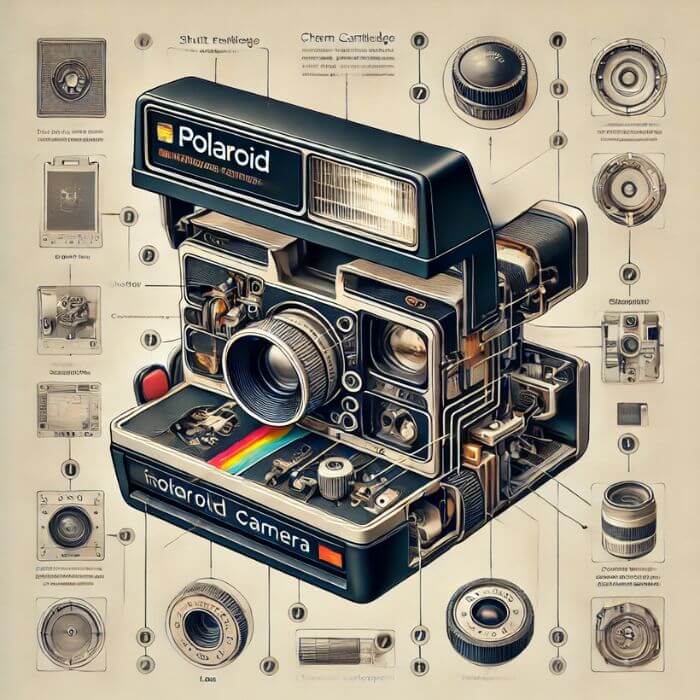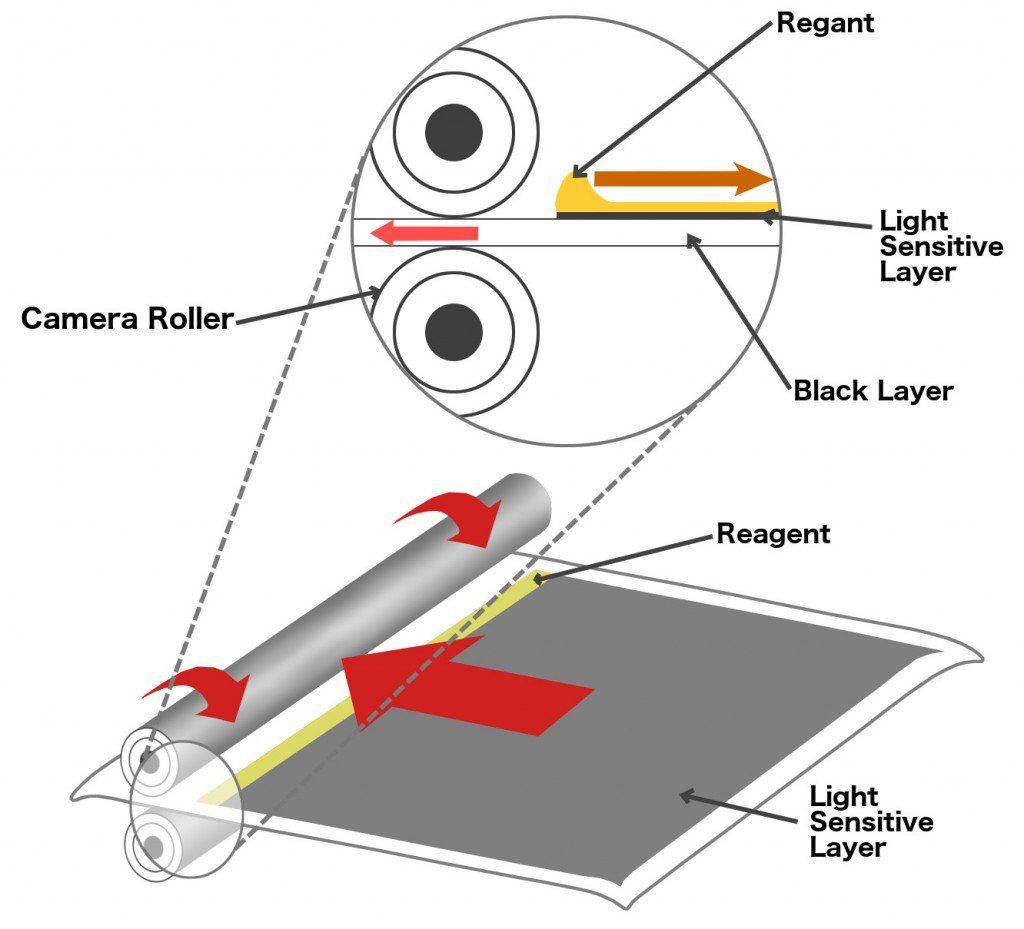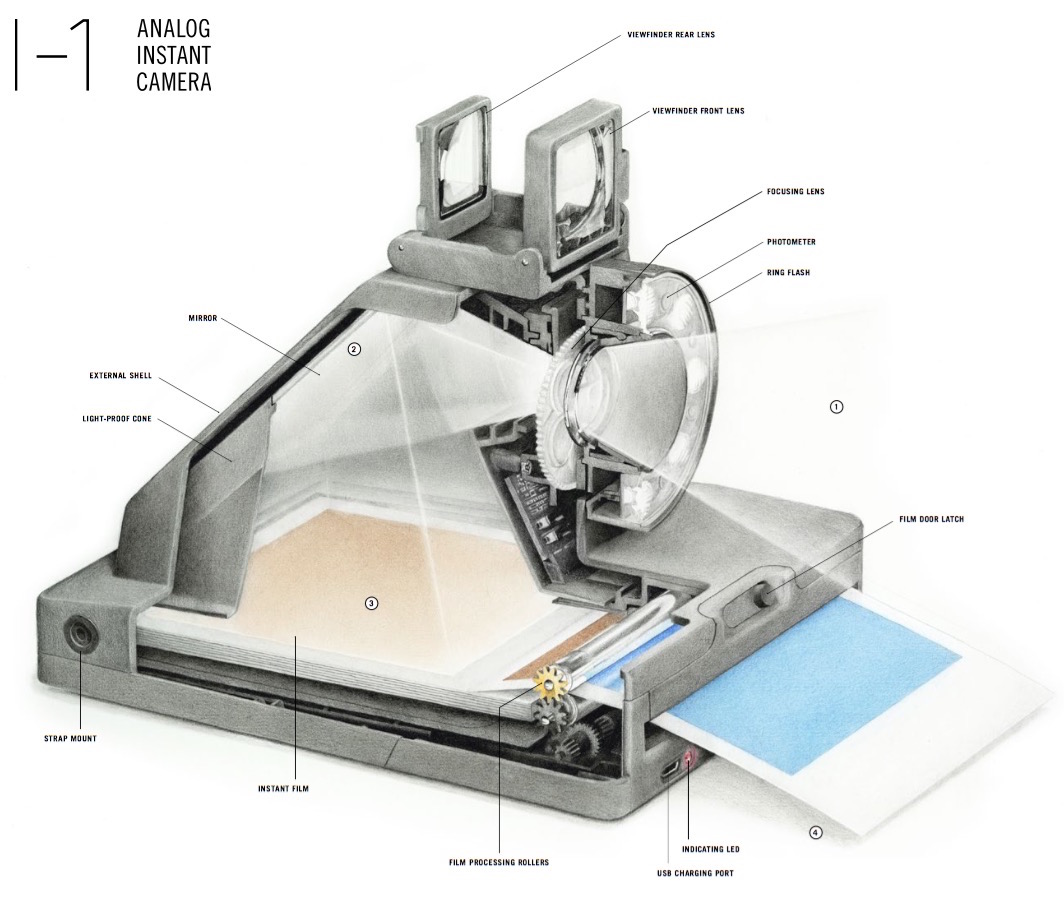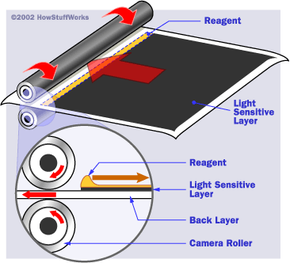A Polaroid camera exposes film to light and instantly develops the photo. It uses a chemical process within the camera itself.
Polaroid cameras capture the essence of moments instantly, creating a physical memento within minutes. Their magic lies in their unique ability to process film on the spot, unlike traditional cameras that require a separate development process. Enthusiasts cherish these cameras for their simplicity and the vintage nostalgia they evoke.
Inside, a complex chemical reaction gets triggered the moment a picture is taken. This reaction develops and fixes the image, which emerges from the camera and comes to life in the user’s hands. Polaroid cameras, embodying the instant gratification of seeing a photo moments after capturing it, have carved a lasting niche in the photography world.
The Magic Of Instant Photography
The journey of Polaroid began with Edwin Land’s vision in 1943. He invented the first camera that produced photos instantly. This revolutionized the way we took pictures. People instantly saw the magic of their moments. The Polaroid camera’s charm has lived on for decades.
Peeking Inside A Polaroid Camera

Polaroid cameras capture memories with a unique charm. Open one up, and you’ll find intriguing components. They collaborate to create instant photographs. Let’s explore the inner workings of these iconic cameras.
Key Components And Their Roles
Inside a Polaroid camera, several parts play vital roles:
- Lens: Gathers light, starting the photo process.
- Shutter: Controls the light’s duration on the film.
- Film: Contains layers for image development.
- Rollers: Spread chemicals across the film.
- Flash: Provides light for a perfect shot.
- Viewfinder: Helps frame your subject.
- Battery: Powers the camera, stored in the film pack.
The Journey Of Light Through The Camera
- Step 1: Light enters through the lens.
- Step 2: It hits the film where the picture is captured.
- Step 3: The shutter snaps shut after a fraction of a second.
- Step 4: The photo ejects and rollers press the chemicals.
- Step 5: Chemicals react, revealing your snapshot.
The Chemical Symphony In A Film Packet
Imagine a tiny orchestra in each Polaroid film packet. This orchestra plays a chemical symphony to create a photo. When you click a picture, these chemicals start working. They weave magic to make your image appear.
Anatomy Of A Polaroid Film Sheet
Each Polaroid film sheet is like a sandwich. It has layers with different jobs. Here is a breakdown:
- Clear Plastic Top Sheet: Protects the image.
- Reagent Pods: These contain the chemicals for the magic.
- Light-sensitive Layers: These layers capture the picture.
- Black Plastic Backing: Blocks light from ruining the film.
The Role Of Reagents In Image Development
Reagents are the chemical heroes in a Polaroid film. When light hits the film, it starts a reaction. The reagents then spread across the film. They bring the captured image to life. They are like painters, painting your picture.
Here’s how this works:
- Click: You take a photo, and the shutter opens.
- Expose: Light hits the film and starts the chemical reaction.
- Squish: The camera rollers squeeze the reagent across the film.
- Develop: The reagents work to make colors and forms of the image.

Credit: www.scienceabc.com
From Click To Picture: The Development Process
In the magical world of photography, the Polaroid camera stands out. This classic gadget turns a simple click into a tangible photograph in minutes. Understanding the development process from when the button is pressed to when the image appears is not just fascinating but also offers an appreciation of the technological marvel of instant photography.
The transformation from click to picture involves a complex chemical reaction, all neatly packed within the iconic Polaroid film cassette. Let’s dive into what happens inside these retro-style cameras.
The Exposure Sequence
First, the film receives the image. It happens almost like magic, yet it’s pure science. When the camera’s button is pushed, the shutter opens briefly to let in light. This light creates the picture we see.
| Step | Action | Result |
|---|---|---|
| 1 | Press the button | Shutter opens |
| 2 | Light enters | Image captured on film |
| 3 | Shutter closes | Light is blocked |
The Spread Of Chemistry Across The Film
The real magic begins once the shutter snaps shut. The film ejects from the camera and rollers compress it, bursting open a pod of special chemicals. These chemicals spread across the entire surface of the film.
- Chemicals react to light-exposed areas
- Unexposed areas absorb different chemicals
- The image slowly emerges on the film
This clever process, which takes place in the span of a few minutes, ultimately reveals the captured image. Bright spots on the photo correspond to areas where the most light hit the film. Dark spots are where less light was present. The photograph then fully develops, freezing a moment in time.
Maintaining The Magic: Polaroid Care And Tips
Maintaining the magic of your Polaroid camera involves simple, but vital care and tips. By following our advice, your camera will keep capturing beautiful moments for years to come. It’s important to treat it with love and understand its needs. Let’s explore how to keep your Polaroid camera happy and snapping lovely shots!
Best Practices For Polaroid Camera Upkeep
- Keep it clean: Use a soft cloth to wipe the exterior. Avoid water and harsh chemicals.
- Avoid extremes: Don’t leave your camera in direct sunlight or cold places. Extreme temperatures damage it.
- Handle with care: Always use the strap. This prevents drops that can break your camera.
- Proper storage: When not in use, store your camera in a dry place.
- Charge the battery: For models with a rechargeable battery, keep it charged to ensure readiness.
Troubleshooting Common Polaroid Camera Issues
| Issue | Solution |
|---|---|
| Picture doesn’t develop | Check film expiration date. Ensure correct installation. |
| Camera won’t turn on | Recharge or replace battery. Make sure it’s correctly inserted. |
| Black streaks on photo | Clean rollers inside film door using a soft cloth. |
| Light or Dark photos | Adjust lighten/darken slider. Check for exposure issues. |

Credit: support.polaroid.com
The Cultural Resurgence Of Polaroid Cameras
Polaroid cameras are making a comeback. People love the vintage charm these cameras offer. Instantly holding a picture creates magic, a connection to the past. Artists and trend-setters brought them back into the spotlight. Everyone, from photography buffs to fashion influencers, appreciates the unique quality of a Polaroid.
Nostalgia And The Role Of Physical Photos
Physical photos carry memories that digital images can’t match. They transport us back in time. Touching and sharing a Polaroid photo feels special. It’s an experience that lives on. Photo albums and walls adorned with Polaroid photos are treasured items. People remember moments with more love when they can see and touch photos.
The Influence On Modern Art And Media
Polaroid cameras shape creativity. Artists value their unique imperfections. These imperfections make each photo one of a kind. Modern media finds inspiration in these images. The influence is seen across fashion shoots to indie films. Polaroids bring a certain authenticity that’s hard to replicate with digital.

Credit: www.youtube.com
Frequently Asked Questions On How Does A Polaroid Camera Work
How Do Polaroid Cameras Create Instant Photos?
Polaroid cameras use a special film containing color dyes and developer chemicals. When the shutter opens, light exposes the film. The camera then ejects the film, which passes through rollers that spread the developer. This chemical reaction creates the photo within minutes.
What Powers A Polaroid Camera’s Film Development?
Most Polaroid cameras have a battery either in the camera or integrated within the film pack. The battery provides the necessary electricity to start the chemical development process that reveals the photo on the film after exposure.
Can Polaroid Cameras Work Without Ink Cartridges?
Yes, Polaroid cameras don’t require ink cartridges. They use film packs that have all the required chemicals for photo development sealed within. As the photo is ejected, it goes through a process that reveals the image without needing additional ink.
Is It Possible To Reuse A Polaroid Photo Film?
No, once a Polaroid photo film is exposed and developed, it cannot be reused. Each film sheet contains chemicals for a one-time development process, which means you need a new film for every picture you take.
Conclusion
Understanding the inner workings of a Polaroid camera demystifies this classic photography icon. It’s the blend of chemistry and optics, swiftly delivering tangible memories. Embrace the vintage charm and instant gratification, a testament to ingenious technology enduring in a digital age.
Keep capturing those spontaneous moments, one click at a time.


